What are the key features of an antique brass kitchen sink faucet with hot and cold mixer?
An antique brass kitchen sink faucet typically features a vintage design with a warm, aged brass finish. It includes separate handles or a single lever for hot and cold water control.

How does the antique brass finish contribute to the faucet's aesthetic appeal?
The antique brass finish adds a classic and elegant look to the kitchen decor, enhancing traditional or rustic themes with its warm tones.

What advantages does a hot and cold mixer provide compared to other faucet types?
A hot and cold mixer faucet allows precise control over water temperature, catering to various kitchen tasks from washing dishes with warm water to filling pots with cold water.

Read More
What should consumers consider regarding the installation process of an antique brass kitchen sink faucet?
Ensure compatibility with your sink's existing setup, including the number of mounting holes required and the distance between them. Professional installation may be necessary for optimal performance.
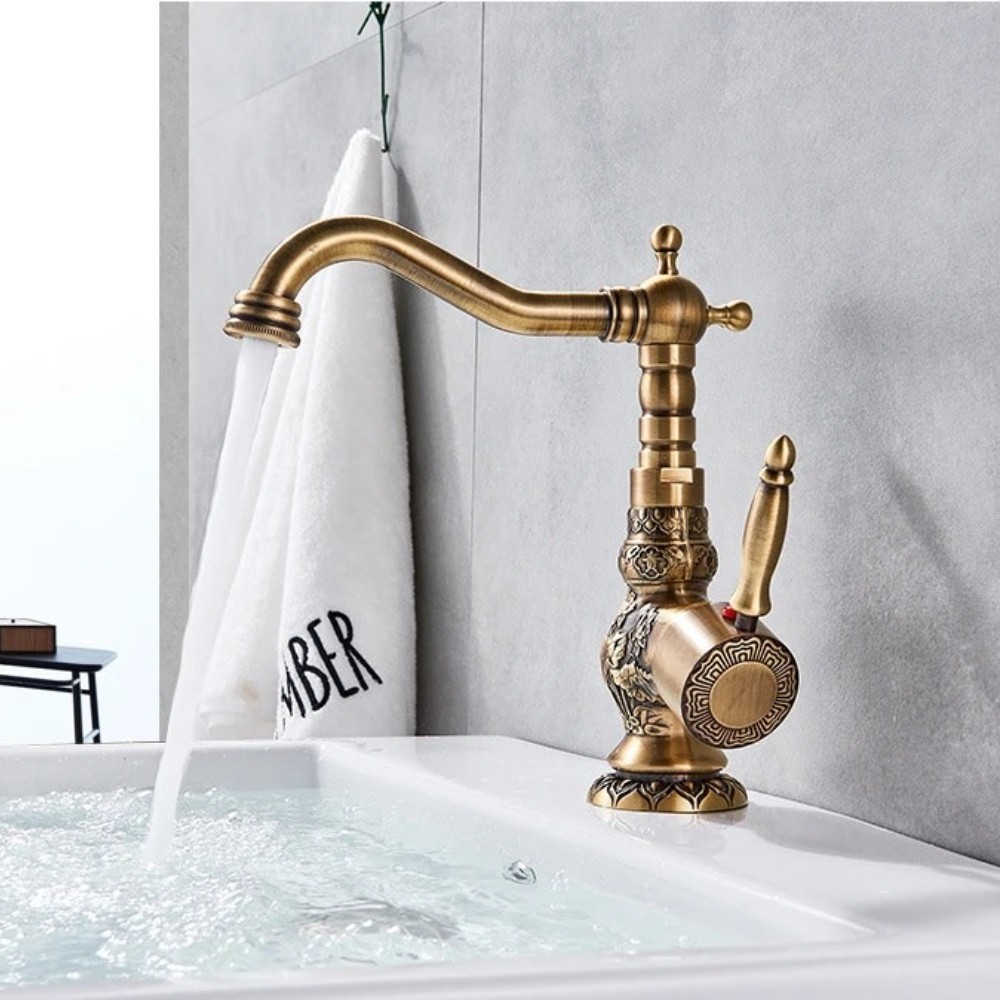
Does the antique brass faucet come with any warranties?
Reputable brands like FontanaShowers, BathSelect, Kholer, Delta, Moen, Grohe often offer warranties on their faucets, covering defects in materials and workmanship. Check with the manufacturer for specific warranty details.

Can an antique brass kitchen sink faucet with a hot and cold mixer accommodate additional features like a pull-down sprayer?
Yes, some models may include a pull-down sprayer for added functionality, allowing for easier rinsing and cleaning of dishes and the sink area.

How does the choice between a single-handle and dual-handle design impact usability?
A single-handle design offers convenience by allowing users to adjust water temperature and flow with one hand. Dual-handle faucets provide separate controls for hot and cold water, offering precise adjustment.

What considerations should be made for water efficiency when choosing an antique brass kitchen sink faucet?
Look for faucets labeled with WaterSense certification, indicating they meet EPA standards for water efficiency. These faucets help conserve water without sacrificing performance.
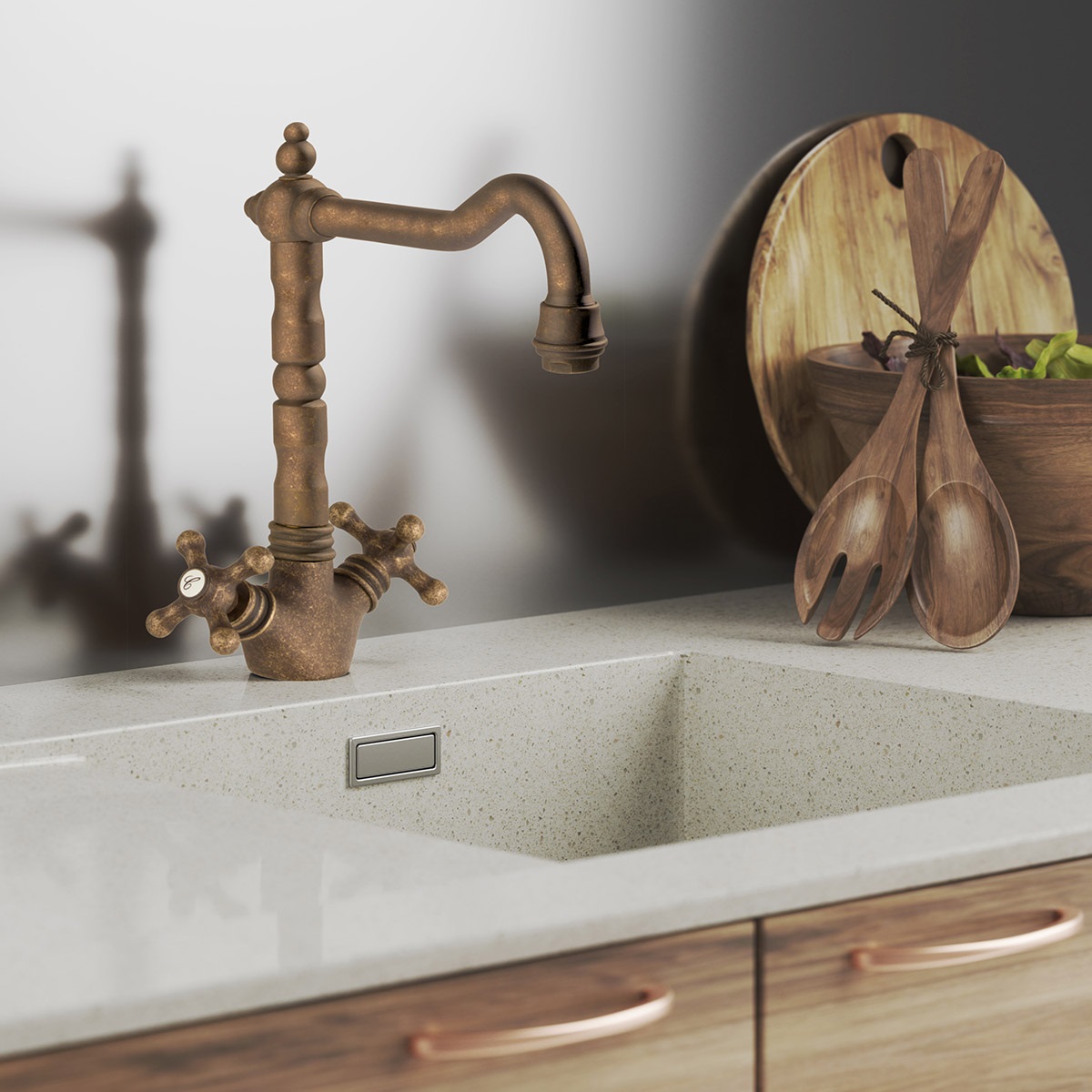
Read More
Are there compatibility issues consumers should be aware of when pairing an antique brass faucet with different sink materials?
Antique brass faucets are generally compatible with most sink materials, including stainless steel, porcelain, and granite composite. Ensure proper installation to prevent leaks or damage.

How can consumers ensure the durability of an antique brass kitchen sink faucet with a hot and cold mixer?
Choose faucets made from high-quality materials like solid brass or stainless steel, which offer durability and resistance to corrosion. Proper maintenance also extends the faucet's lifespan.

What are some common design variations available in antique brass kitchen sink faucets with hot and cold mixers?
Variations include traditional bridge-style faucets, modern high-arc designs, and vintage-inspired spouts with intricate detailing. Choose a design that complements your kitchen's overall aesthetic.
Can consumers customize their antique brass kitchen sink faucet with additional accessories or finishes?
Some manufacturers offer customization options such as matching soap dispensers or alternative finishes like brushed nickel or oil-rubbed bronze, allowing homeowners to personalize their kitchen decor.
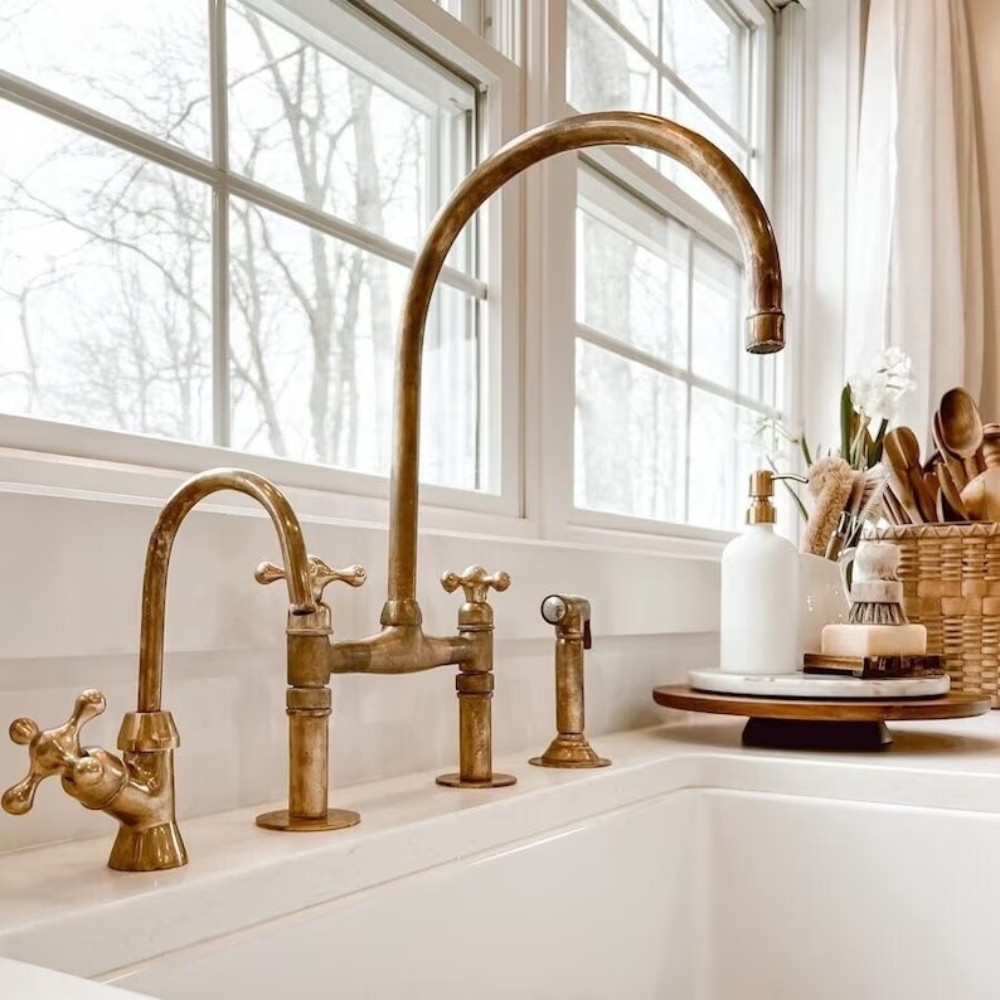
How do you clean and maintain an antique brass kitchen sink faucet?
To maintain its antique brass finish, clean with a soft cloth and mild soap. Avoid harsh chemicals to preserve its aesthetic appeal.
Is the finish of the faucet resistant to tarnishing?
The antique brass finish is specially treated to resist tarnishing and corrosion over time, maintaining its elegant appearance.

Is this faucet compatible with a water filtration system?
Yes, it can be used with compatible water filtration systems to enhance water quality directly from your kitchen sink.
How long does the antique brass finish typically last?
With proper care, the finish can maintain its allure for many years, offering lasting beauty and durability.
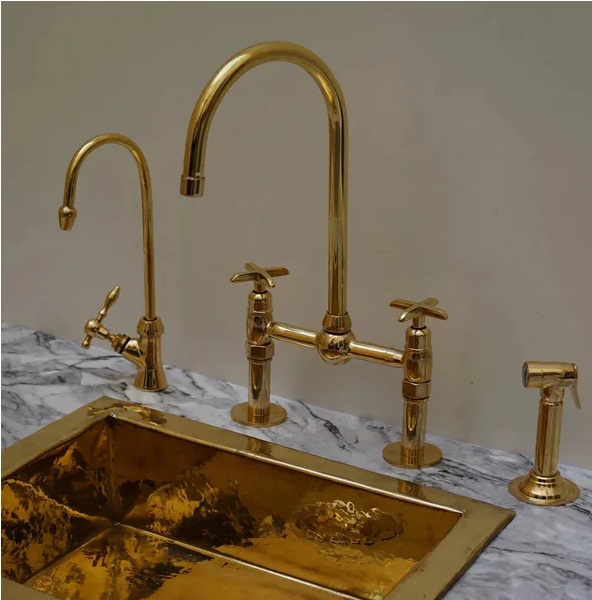
Can I use this faucet with a low water pressure system?
Yes, it functions efficiently with both high and low water pressure systems, ensuring consistent performance.
Does the faucet come with all necessary installation components?
Yes, it includes all essential mounting hardware and components, facilitating a complete and straightforward installation process.
Read More
Historical Influence: What specific historical period or design movement does this antique brass kitchen sink faucet draw inspiration from?
Antique brass kitchen sink faucets often draw inspiration from various historical periods, each with its unique design elements and aesthetic values. One prominent era that influences these designs is the Victorian period, which spanned from the mid-19th century to the early 20th century. Victorian design is characterized by its intricate details, elaborate patterns, and a sense of opulence. Faucets inspired by this era typically feature ornate handles, decorative spouts, and intricate engravings that reflect the grandeur of Victorian homes.
.jpg)
Another significant influence comes from the Art Deco movement, which emerged in the 1920s and 1930s. Art Deco design is known for its bold geometric shapes, clean lines, and a focus on luxury and modernity. Faucets inspired by this movement often incorporate sleek, angular forms, and sometimes even incorporate other materials like glass or enamel to create a striking visual contrast with the brass.
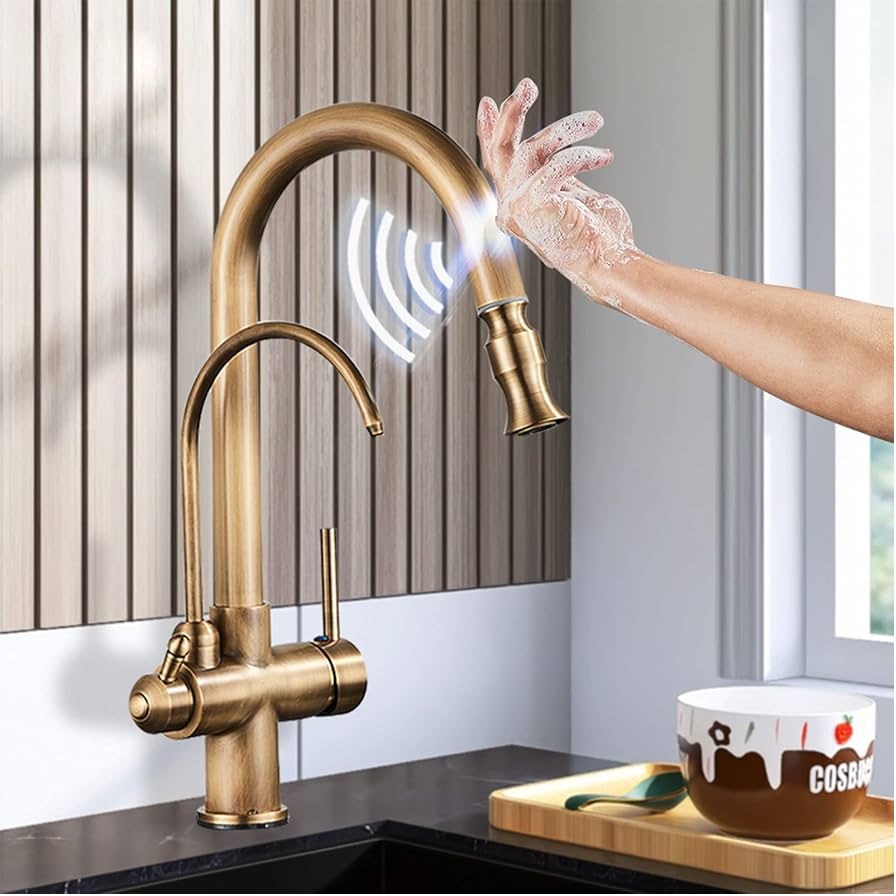
Additionally, some antique brass faucets are influenced by the Arts and Crafts movement, which emphasized craftsmanship and the use of natural materials. This movement, which gained popularity in the late 19th and early 20th centuries, promoted simple, functional designs with minimal ornamentation. Faucets inspired by the Arts and Crafts movement often feature smooth, rounded edges, and a focus on the inherent beauty of the brass material itself.
.jpg)
In terms of regional influences, European designs, particularly those from France and England, have had a significant impact on antique brass kitchen faucets. French designs often incorporate elements of Rococo style, with their playful curves and intricate details, while English designs might reflect the more restrained and elegant Georgian or Edwardian styles.
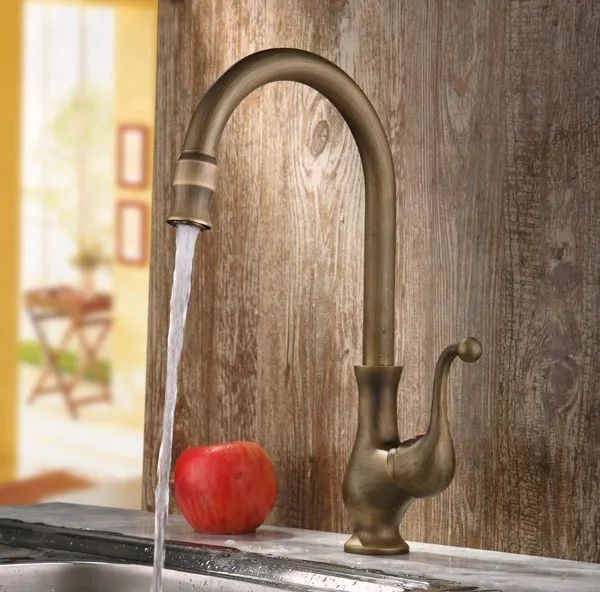
Overall, the historical influences on antique brass kitchen sink faucets are diverse and multifaceted, drawing from a rich tapestry of design movements and periods. Each faucet not only serves a functional purpose but also acts as a historical artifact, reflecting the aesthetics and values of the time in which it was created.
Read More
Patina Development:
How does the patina on antique brass faucets change over time,
and what factors influence development?
The patina on antique brass faucets is a natural aging process that adds character and uniqueness to each piece. Over time, brass develops a surface layer known as patina, which can range in color from greenish-blue to dark brown, depending on various factors. This patina forms as the brass reacts with elements in its environment, such as oxygen, moisture, and pollutants.

One of the primary factors influencing patina development is exposure to air and moisture. When brass is exposed to oxygen, it undergoes a process called oxidation, which leads to the formation of a thin oxide layer on its surface. This layer initially appears as a dulling of the shiny brass surface, gradually transforming into darker hues as the oxidation process continues. Moisture accelerates this process, so faucets in humid environments or those frequently exposed to water will develop patina more quickly.
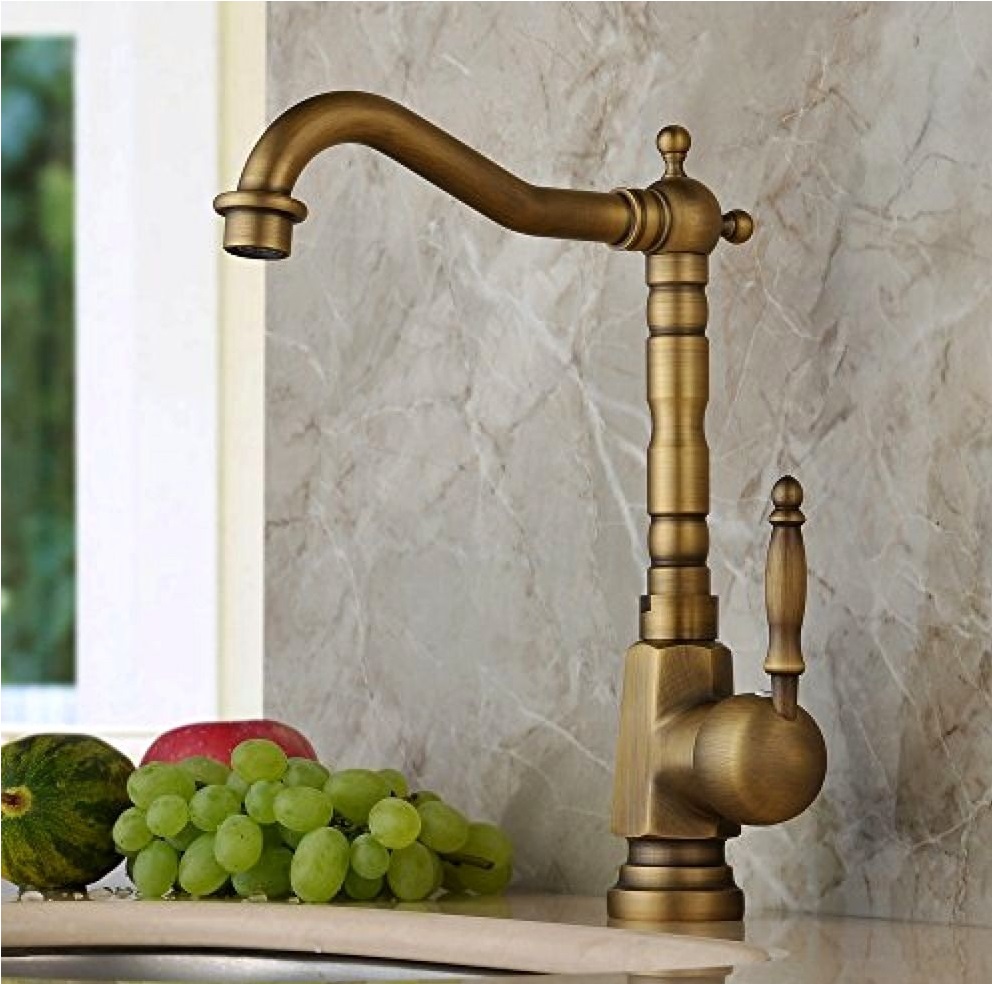
Another significant factor is the presence of chemicals and pollutants in the environment. For example, exposure to sulfur compounds can lead to the formation of a greenish patina known as verdigris. This is commonly seen on brass objects exposed to polluted air or certain cleaning agents. Additionally, contact with acids, such as those found in some household cleaners or even certain foods, can also affect the patina's development, leading to darker and more varied colorations.
.jpg)
The handling and usage of the faucet also play a crucial role in patina development. Areas of the faucet that are frequently touched or used will wear differently compared to less-touched areas. This results in a varied patina that highlights the natural wear patterns, giving each faucet a unique appearance. The oils from human skin can also interact with the brass, further influencing the patina in areas of frequent contact.
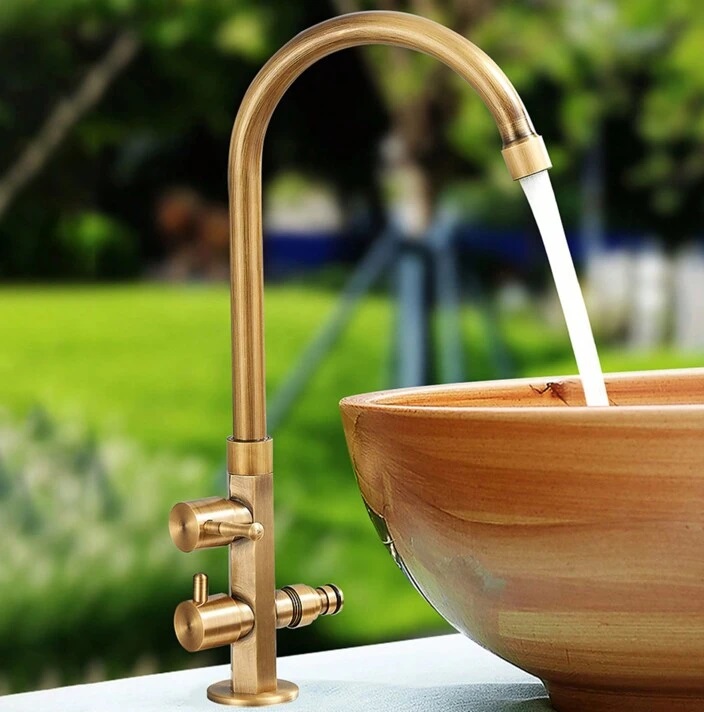
Interestingly, the patina can be intentionally altered or accelerated through various techniques. For example, some antique enthusiasts use specific chemicals or treatments to create an aged look more quickly. Others prefer to let the patina develop naturally over time, appreciating the slow and unpredictable changes that occur.
.jpg)
In summary, the patina on antique brass faucets is a dynamic and evolving feature influenced by environmental factors, exposure to chemicals and pollutants, and the usage patterns of the faucet. This natural aging process enhances the aesthetic appeal and historical value of antique brass faucets, making each piece truly one-of-a-kind.
Read More
Maintenance Techniques:
What are the best maintenance practices to preserve the original look of an antique brass kitchen sink faucet without causing damage?
Preserving the original look of an antique brass kitchen sink faucet requires careful maintenance techniques that respect the delicate nature of aged brass. One of the primary goals in maintaining such faucets is to avoid harsh chemicals and abrasive materials that can damage the brass and remove the valuable patina that has developed over time.

Firstly, regular cleaning with mild, non-abrasive solutions is essential. A simple mixture of warm water and a gentle dish soap can effectively clean the faucet without causing harm. Using a soft cloth or sponge, gently wipe down the faucet to remove any dirt or grime. Avoid using abrasive scrubbers or scouring pads, as these can scratch the brass surface and disrupt the patina.
For more stubborn stains or buildup, a solution of equal parts vinegar and water can be used. Apply the solution to the faucet with a soft cloth, allowing it to sit for a few minutes before gently wiping it away. Vinegar is effective in breaking down mineral deposits and grime without being too harsh on the brass. However, it is important to thoroughly rinse the faucet with water afterward to prevent any lingering vinegar from continuing to react with the brass.

Another key aspect of maintaining an antique brass faucet is regular polishing to enhance its natural luster. Using a high-quality brass polish specifically designed for antique items is recommended. Apply the polish with a soft cloth, following the product instructions carefully. It is important to polish in the direction of the brass grain, if visible, to maintain the faucet's integrity and appearance.
.jpg)
To protect the brass from further tarnishing, a thin layer of wax can be applied after polishing. This creates a barrier that helps prevent oxidation and reduces the frequency of polishing needed. Specialty brass waxes are available for
this purpose, and they should be applied sparingly to avoid buildup.
Additionally, it is important to avoid exposing the faucet to harsh chemicals or cleaning agents that can strip the brass of its protective patina. Common household cleaners containing bleach, ammonia, or acidic substances should be avoided.
Instead, opt for gentle, brass-safe cleaning products.

Finally, regular inspections are crucial to catch any signs of damage or wear early. Look for any cracks, loosened parts, or areas where the patina is wearing unevenly. Addressing these issues promptly can prevent further damage and ensure the faucet remains in good condition.
By following these maintenance techniques, the original look of an antique brass kitchen sink faucet can be preserved, allowing it to retain its historical charm and functionality for many years to come.
Read More
Restoration Methods: What are the recommended restoration methods for an antique brass kitchen sink faucet that has experienced wear and tear?
Restoring an antique brass kitchen sink faucet that has experienced wear and tear requires a delicate balance between cleaning, repairing, and preserving the original character of the piece. The goal is to enhance the faucet's functionality and appearance while maintaining its historical integrity.

The first step in the restoration process is a thorough cleaning. Start by removing any surface dirt and grime using a mild solution of warm water and gentle dish soap. Use a soft cloth or sponge to avoid scratching the brass. For stubborn deposits, a mixture of equal parts vinegar and water can be applied with a soft cloth. Allow the solution to sit for a few minutes before wiping it away and rinsing thoroughly with water.
.jpg)
Once the faucet is clean, the next step is to assess and address any structural issues. Inspect the faucet for cracks, leaks, or loose parts. If any components are damaged, they may need to be repaired or replaced. It is crucial to use replacement parts that are compatible with the original design and materials to maintain the faucet's authenticity. In some cases, finding exact matches for antique parts can be challenging, so it might be necessary to consult with a specialist in antique plumbing fixtures.
After addressing any structural repairs, the focus shifts to restoring the brass finish. Polishing the brass can help bring back its original luster. Use a high-quality brass polish designed for antique items, and apply it with a soft cloth. Follow the product instructions carefully, and polish in the direction of the brass grain if visible. Avoid over-polishing, as this can remove the natural patina that adds character to the antique piece.
.jpg)
In cases where the patina is uneven or has been damaged, it may be necessary to re-patinate the brass. This process involves applying specific chemicals to create a uniform patina
Historical Influence: What specific historical period or design movement does this antique brass kitchen sink faucet draw inspiration from?
Patina Development: How does the patina on antique brass faucets change over time, and what factors influence its development?
.jpg)
The Art Deco movement of the 1920s and 1930s also left a lasting impact on the design of antique brass faucets. Art Deco design is known for its bold geometric shapes, clean lines, and a focus on luxury and modernity. Faucets from this era often incorporate sleek, angular forms, and sometimes even combine other materials like glass or enamel with brass to create a striking visual contrast. The emphasis is on symmetry and streamlined shapes, reflecting the modernist ideals of the time.
Additionally, the Colonial Revival period, which gained popularity in the early 20th century, also influenced the design of antique brass faucets. This movement sought to revive elements of American colonial architecture and design, emphasizing simplicity, symmetry, and traditional craftsmanship. Faucets from this period often feature straightforward, utilitarian designs with subtle decorative touches that harken back to early American styles.
.jpg)
In terms of regional influences, European designs, particularly those from France and England, have had a significant impact on antique brass kitchen faucets. French designs often incorporate elements of Rococo style, with their playful curves and intricate details, while English designs might reflect the more restrained and elegant Georgian or Edwardian styles.
Overall, antique brass kitchen sink faucets are a testament to the rich tapestry of historical design influences. They not only serve a functional purpose but also act as historical artifacts, reflecting the aesthetics and values of the time in which they were created. Each faucet tells a story, connecting us to the craftsmanship and design philosophies of bygone eras.
Read More
Patina Development: How does the patina on antique brass faucets change over time, and what factors influence its development?
The patina on antique brass faucets is a natural aging process that adds character and uniqueness to each piece. This patina forms as the brass reacts with elements in its environment, such as oxygen, moisture, and pollutants, resulting in a surface layer that can range in color from greenish-blue to dark brown. The development of patina is influenced by several factors, including environmental conditions, exposure to chemicals, and usage patterns.

One of the primary factors influencing patina development is exposure to air and moisture. When brass is exposed to oxygen, it undergoes a process called oxidation, leading to the formation of a thin oxide layer on its surface. This layer initially appears as a dulling of the shiny brass surface, gradually transforming into darker hues as the oxidation process continues. Moisture accelerates this process, so faucets in humid environments or those frequently exposed to water will develop patina more quickly. For instance, faucets in coastal areas, where the air is salty and humid, tend to develop a patina faster compared to those in arid regions.
.jpg)
Another significant factor is the presence of chemicals and pollutants in the environment. Exposure to sulfur compounds can lead to the formation of a greenish patina known as verdigris, commonly seen on brass objects exposed to polluted air or certain cleaning agents. Additionally, contact with acids, such as those found in some household cleaners or even certain foods, can also affect the patina's development, leading to darker and more varied colorations. The specific chemical makeup of the brass alloy itself can also influence the patina, with different compositions reacting differently to environmental factors.
The handling and usage of the faucet play a crucial role in patina development. Areas of the faucet that are frequently touched or used will wear differently compared to less-touched areas. This results in a varied patina that highlights the natural wear patterns, giving each faucet a unique appearance. The oils from human skin can interact with the brass, further influencing the patina in areas of frequent contact. Over time, these touchpoints may develop a smoother, more polished look, contrasting with the darker, more textured areas that are less frequently handled.
.jpg)
Interestingly, the patina can be intentionally altered or accelerated through various techniques. Some antique enthusiasts use specific chemicals or treatments to create an aged look more quickly, mimicking the natural patina that would take years to develop. Others prefer to let the patina develop naturally over time, appreciating the slow and unpredictable changes that occur.




 High-Quality brass kitchen faucet
High-Quality brass kitchen faucet 



 Nice design
Nice design 

